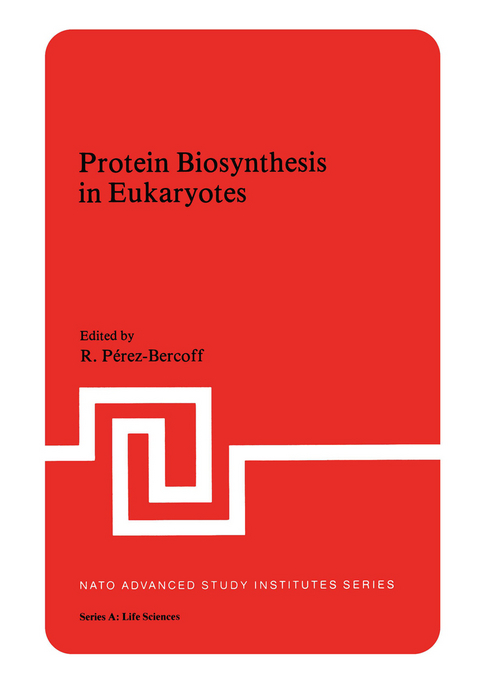
Protein Biosynthesis in Eukaryotes
Springer-Verlag New York Inc.
978-1-4684-4126-0 (ISBN)
This oversimplified view persisted for more than 50 years: It was just in 1940 that Borsook and Dubnoff examined the thermodynamical aspects of the process, and concluded that protein synthesis could not be the reverse of protein degradation, such an "uphill task being thermody- namically impossible *** * " The next quarter of a century witnessed the unravelling of the basic mechanisms of protein biosynthesis, a predictable aftermath of the Copernican revolution in biology which followed such dramatic de- velopments as the discovery of the nature of the genetic material, the double helical structure* of DNA, and the determination of the ge- netic code. Our present understanding of the sophisticated mechan- isms of regulation and control is a relatively novel acquisition, and recent studies have shed some light into the structure and organi- zation of the eukaryotic gene.
Section I: The Protein Synthesizing Machinery of Eukaryotes.- 1: Structure and Function of tRNA and Aminoacyl tRNA Synthetases.- 2: The Structure of Eukaryotic Ribosome.- 3: The Initiation Factors.- Section II: On the Importance of Being Spliced.- 4: Messenger RNA Structure and Biosynthesis.- 5: SV40 as a Model System for the Study of RNA Transcription and Processing in Eukaryotie Cells.- 6: Messenger Ribonucleoprotein Particles.- Section III: On Selecting the Right Messenger.- 7: Recognition of Initiation Sites in Eukaryotic mRNAs.- 8: A Closer Look at the 5? End of mRNA in Relation to Initiation.- 9: Initiation Factor/mRNA Interactions and mRNA Recognition.- 10: But Is the 5? End of mRNA Always Involved in Initiation?.- Section IV: Synthesis and Processing of Proteins.- 11: Peptide Chain Elongation and Termination in Eukaryotes.- 12: Biosynthesis, Modifications, and Processing of Viral Polyprot eins.- Section V: Inhibition of Protein Synthesis at Selected Levels.- 13: Action of Inhibitors of Protein Biosynthesis.- 14: Virus-Induced Shut-Off of Host Specific Protein Synthesis.- Section VI: Mechanisms of Regulation and Control.- 15: The Cytoplasmic Control of Protein Synthesis.- 16: Regulation of eIF-2 Activity and Initiation of Protein Synthesis in Mammalian Cells.- 17: Messenger RNA Competition.- 18: Interferon Action: Control of RNA Processing, Translation and Degradation.- The Maratea Conferende: List of Participants.
| Reihe/Serie | Nato Science Series: A ; 41 |
|---|---|
| Zusatzinfo | 50 Illustrations, black and white; XIX, 501 p. 50 illus. |
| Verlagsort | New York, NY |
| Sprache | englisch |
| Maße | 178 x 254 mm |
| Themenwelt | Studium ► 1. Studienabschnitt (Vorklinik) ► Anatomie / Neuroanatomie |
| ISBN-10 | 1-4684-4126-4 / 1468441264 |
| ISBN-13 | 978-1-4684-4126-0 / 9781468441260 |
| Zustand | Neuware |
| Haben Sie eine Frage zum Produkt? |
aus dem Bereich


